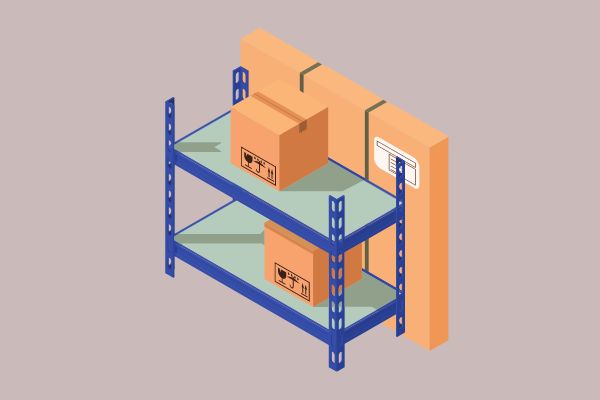What are the regulations on content of reporting of petroleum reserves and resources in Vietnam from October 1, 2024 under Circular 13/2024/TT-BCT?
What are the regulations on content of reporting of petroleum reserves and resources in Vietnam from October 1, 2024 under Circular 13/2024/TT-BCT?
According to Article 9 of Circular 13/2024/TT-BCT, the content of reporting of petroleum reserves and resources in Vietnam is stipulated as follows:
(1) The detailed content of the petroleum resources and reserves report is prepared according to the template specified in Appendix III issued together with Circular 13/2024/TT-BCT and includes two parts:
- Explanatory section;
- Appendix section that includes tables, drawings, and necessary accompanying documents.
(2) The approval content includes: the approval of petroleum in place at 2P levels (including P1 and P2) with a 50% probability, and recognizing the 2P petroleum reserves as the basis for developing and updating the oil field development plan, including solutions to improve and enhance the recovery factor.
(3) For undeveloped groups and undiscovered petroleum resources, the Vietnam Oil and Gas Group records, compiles, evaluates, and periodically reports to the Ministry of Industry and Trade annually to serve resource management and strategic planning and future exploration, and appraisal.
(4) Details of approval and recognition of petroleum resources and reserves are stipulated in Appendix IB issued together with Circular 13/2024/TT-BCT.
(5) Recording updated reporting of petroleum reserves and resources
In the updated petroleum resources and reserves report according to the provisions of Clause 5, Article 45 of the Petroleum Law 2022, if the total initial petroleum in place at the 2P level changes by less than 15% compared to the most recent approval, the contractor reports to the Vietnam Oil and Gas Group for compilation.

What are the regulations on content of reporting of petroleum reserves and resources in Vietnam from October 1, 2024 under Circular 13/2024/TT-BCT? (Image from the Internet)
What are regulations on boundaries of classification of petroleum reserves and resources in Vietnam?
According to Article 6 of Circular 13/2024/TT-BCT on boundaries of classification of petroleum reserves and resources in Vietnam:
(1) The boundary of petroleum resources and reserves classification is determined for each reservoir and petroleum-bearing formation according to the principle of extrapolation in accordance with specific geological conditions specified in Appendix II issued together with Circular 13/2024/TT-BCT.
(2) The determination of the boundary and distribution of petroleum-bearing formations is based on specific documents and evidence. In cases where similar methods are applied, the contractor must have originating data and explain the applicability of those data to the field or reservoir needing calculation to affirm the suitability of the method selection and calculation parameters.
What are regulations on calculation of petroleum reserves and resources in Vietnam?
According to Article 8 of Circular 13/2024/TT-BCT, the calculation of petroleum resources and reserves in Vietnam is regulated as follows:
According to the classification stipulated in Articles 4 and 5 of Circular 13/2024/TT-BCT, petroleum resources and reserves in Vietnam are calculated as follows:
(1) For discovered petroleum resources
- Development Group
Petroleum resources and reserves are calculated for levels 1P (P1), 2P (P1 + P2), and 3P (P1 + P2 + P3);
Petroleum resources at levels 1P, 2P, and 3P form the basis for calculating petroleum reserves at levels 1P, 2P, and 3P;
Petroleum reserves can be calculated by the deterministic method or the probabilistic method according to the following respective criteria:
+ For the deterministic method: Level 1P has boundaries, properties, and characteristics of the reservoir and petroleum-bearing formations specifically demonstrated by geological, geophysical, and mining technology data, resulting in the potential for actual extractable petroleum volumes being greater than or equal to the calculated P1 value. According to this method, petroleum reserves are analyzed, evaluated, and calculated based on the initial in-place petroleum levels of the corresponding level with appropriate recovery factors of the reservoir and petroleum-bearing formations, meeting the technical, technological, and economic requirements of the project at the time of preparing the petroleum resources and reserves report;
+ For the probabilistic method: Level 1P has a probability of no less than 90% for the actual extractable petroleum volume being greater than or equal to the calculated 1P value. Level 2P has a medium reliability, with a probabilistic method probability of no less than 50% for the actual extractable petroleum volume being greater than or equal to the calculated 2P value. Level 3P has low reliability, with a probabilistic method probability of no less than 10% for the actual extractable petroleum volume being greater than or equal to the calculated 3P value;
- Undeveloped Group
Petroleum resources and potential recovery are calculated for levels 1C (C1), 2C (C1 + C2), and 3C (C1 + C2 + C3);
The method and calculation for levels 1C, 2C, and 3C are similar to the method and calculation for levels 1P, 2P, and 3P;
- Petroleum reserves of the field are updated in the Overall Development Plan (ODP) and revised ODP; Early Development Plan (EDP) and revised EDP; Field Development Plan (FDP) and revised FDP; updated petroleum resources and reserves report (RAR);
- Petroleum reserves of the field must be updated with secondary and tertiary extraction plans such as infill drilling, exploiting additional reservoirs and formations, and applying enhanced and improved petroleum recovery methods (EOR).
(2) For undiscovered petroleum resources
Calculated or forecasted for initial petroleum in place and corresponding potential recoveries (R1, R2) with low, medium, and high levels corresponding to statistical confidence levels of 90%, 50%, and 10%, where the recovery factor is taken according to the similar principle based on the geological and mining technology characteristics of the reservoir and formations, nearby fields, and basins.
(3) The method for calculating petroleum resources and reserves is guided in Appendix II issued together with Circular 13/2024/TT-BCT.
LawNet
